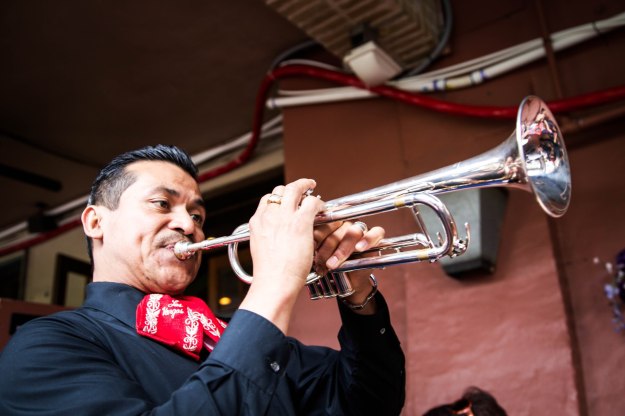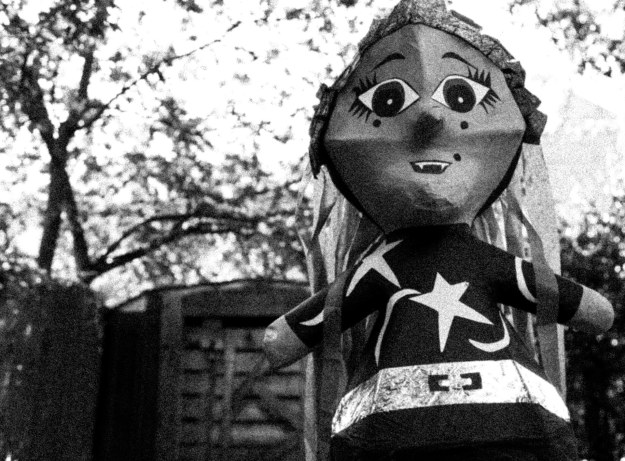
The Wittliff is home to the most extensive collection of one of my favorite photographers: Graciela Iturbide. I found this gem of knowledge at a SFMOMA exhibit on Photography in Mexico during a trip to San Francisco years ago. The Wittliff is located at Texas State University in San Marcos and is worth visiting the next time you drive between Austin and San Antonio. The curator there is exceptionally hospitable and generous with her time. If you notify her in advance, she will have a tower of oversized boxes stacked up on a table waiting for blissful contemplation. Then she will methodically open each box, conjuring up one enchanting image after another with her pristine white magician gloves.
I remember reading a book purchased at the Wittliff, one of those overpriced coffee table books with a plethora of glossy images, a book displayed on the coffee table in my previous life when I bought books to serve such purposes. Flipping through the book one afternoon, I read about how Graciela Iturbide chose the location in San Marcos to care for her life’s work because Texas represented a bridge for her between Mexico and the United States.
That thought has always stuck with me. I like the idea of Texas being a bridge, and it makes me incredibly happy to call Texas home, knowing that so much Mexican tradition is woven in with everyday life here. Some of my favorite things about Texas are cultural traditions rooted in an undeniably spellbinding history when Texas was once part of Spain and later Mexico. Texans may have thrown out Santa Anna, but Mexico still resonates here. The two worlds have always meshed and mingled on this Texas bridge, creating a unique culture that sets Texas apart from many other states, which, quite frankly, lack such a riveting story.
Texas has been on my mind lately because I am stuck here a little longer than planned on a recent trip home. A ten-day trip turned into four long weeks. I had to have unexpected surgery on a knee that was injured while trekking through Chile and Argentina this summer. The silver lining is that I have had ample time to catch up with friends and family over Tex-Mex, one of the many sublime effects produced in this land from the intermingling of worlds. Some people talk of a reverse culture shock when traveling back to your home country. But a deep appreciation is also brought about after a prolonged absence, as you start to see everything through the same lens you would use to explore any other place on the globe. After living in another country for a few years, you examine your hometown, or in my case–a sprawling metropolis–through the eyes of a traveler.
I had lunch today at El Taquito, a place I frequent because they serve up an authentic plate of chilaquiles. It’s located on East Grand, one of my favorite streets in Dallas because my grandfather used to take me to a diner there when I was kid, but also because there is so much joy hidden behind the urban grit of the storefront windows all along that street. And a trip to El Taquito would not be the same without stopping in at the La Dulceria de las Americas to peruse the homemade piñata section. Each one truly is a work of art.
A few years ago, you had to walk back along dark corridors to the very rear of the shop to find the artist’s workshop. The store owner’s daughter was usually there to turn on a series of lights, each switch illuminating a new masterpiece. I learned today that La Dulceria de las Americas recently moved one block south of El Taquito. The piñatas are still kept in a clandestine corner, actually a separate room altogether, and you still have to ask with a hushed tone to see them. This piñata-making business is top secret, and buying one often feels a little like breaking the law.
Nowadays, the pinatas at La Dulceria de las Americas are piled up one on top of the other from floor to ceiling (business must be good), almost like hundreds of discarded toys thrown carelessly into a toy box. It’s a strange sight indeed, it’s tough to decipher what is what in there. And it feels as if the box is somewhat off-limits, a restricted area if you will, so you have to ask for whatever you want. I’ll take a unicorn if you have it. I am looking for a green flying dragon. Got any pink princesses? If they don’t have what you are looking for, I’m fairly certain it can be commissioned to be made.
It’s challenging to control over spending in that place. It’s custom to bring piñatas to any celebratory occasion in Texas, but I admit sometimes I buy them even without an occasion in mind, purchased purely for master craftsmanship. I once bought a giant robot for my classroom, along with a few tin foil-covered red and gold seven-point stars to hang from the ceiling. On another visit, I bought a very green witch. She was a Kermit the frog shade of green. Her sorceress attributes are hidden in the grainy black-and-white world I placed her in the photo below. I remember she was standing right next to a vampire inside the dulceria, whom the teenage daughter of the shop owner/ piñata master extraordinaire sullenly labeled a “wannabe” vampire. Eventually, I returned for the “wannabe” vampire because I couldn’t get him out of my mind. I thought grainy witch could use a companion; they seemed perfect for one another. I tied them side by side, and they swung together in harmony, affixed to the branch of a tree. They were on display in the front yard in the weeks leading up to Hallow’s Eve and later in the backyard for months and months until the spring storms took them out.

Legend has it that Marco Polo witnessed the first piñata in China (usually a clay oxen filled with seeds) and brought a few back for the Italians to recreate and acclimate into their Lent tradition. They quickly named it pignatta, something roughly translated to mean clay pot or fragile pot: linked to the Latin word pigna for pine cones or pineapples or something like that. The Spanish brought the tradition to the New World, but the Mesoamericans already had a very similar version. The Aztecs honored their war/ sun god, Huitzilopochtli, by busting apart a clay pot filled with offerings of precious stones, beads, and berries. And the Maya played a game where blindfolded participants took turns hitting suspended clay pots with some sort of club. Like so many aspects of Mexico’s culture, the two traditions mixed to give us the colorful donkey that you whack with a stick while teetering unstably from side to side because someone has just blindfolded you and spun you around a hundred times. It’s great fun!
Another thing I revere about Texas as much as the piñata is the mariachi band. An experience that is guaranteed to move your emotions. Mariachi originated in the Mexican state of Jalisco, which also happens to be the birthplace of tequila and is home to a variety of Mexican dog effigy vessels, among other things. So the next time you find yourself drinking tequila alongside a mariachi group because you can’t have one without another, consider the mystery behind the origin of both words.
Tequila is said to be a Nahuatl word that describes the place of harvesting plants or perhaps the place of wild herbs or maybe even the place of tricks. Some say it means the place of ceremony since it describes the region where the sacred maguey plant was grown, which the Aztecs fermented to make pulque. The maguey plant even had its own goddess, Mayahuel. Another story tells us tequila can be translated to mean the rock that cuts because tequila is located at the base of a volcano, Tequillan. Apparently, the path to Tequillan was littered with sharp obsidian that cut the feet of Indians.
The origin of the word mariachi is equally disputed. Historians have argued for years, but most believe the word has native roots, most likely the wooden platform performers used. And like so many cultural traditions in Mexico, the Mariachi sound, referred to as son, was created from both native and Spanish traditions. Music was embedded in daily life in the ancient world of the Aztecs, clay rattles and conch shells eventually gave way to Spanish guitars and brass horns. Bands were initially accompanied by dances, which varied by region, but all involved intricate footwork that kept a syncopated rhythm with the musical instruments.
Today, the mariachi band shows up for those big life moments and, as well, at your table while eating Tex-Mex. The best spot on the Texas map to experience the latter is on the RiverWalk in San Antonio, where the picture at the top of this post was taken after my first visit to the Alamo. The next best place to experience the mariachi is at El Ranchito. It’s a restaurant on Jefferson Street in Oak Cliff, known for its fiestas, mariachis, and cabrito. And it brings in some of the best mariachi bands throughout the Southwest on a daily basis.
So there you have it, a bunch of useless information you probably won’t remember, although I hope you never forget that tequila has its very own god. And also that Texas is home to many Mexican traditions that some may argue never crossed the border because there was a time not too long ago when there wasn’t a border to cross. As a fifth-generation Texan, the type in possession of a very worn 100-dollar bill from the Republic of Texas passed along from ancestors who once lived in a state that was its very own country, I am forever grateful for our Mexican heritage.
These traditions were created as well from intermingling cultures, native and Spanish. Some of the best cultural traits are usually the result of two worlds meeting. Texas wouldn’t be the same without them; it certainly would not be as fun. I’ve always said the United States has so much to learn from Mexico when it comes to community and celebration. And if Texas is a bridge between both worlds, then it’s the perfect place to teach it.
